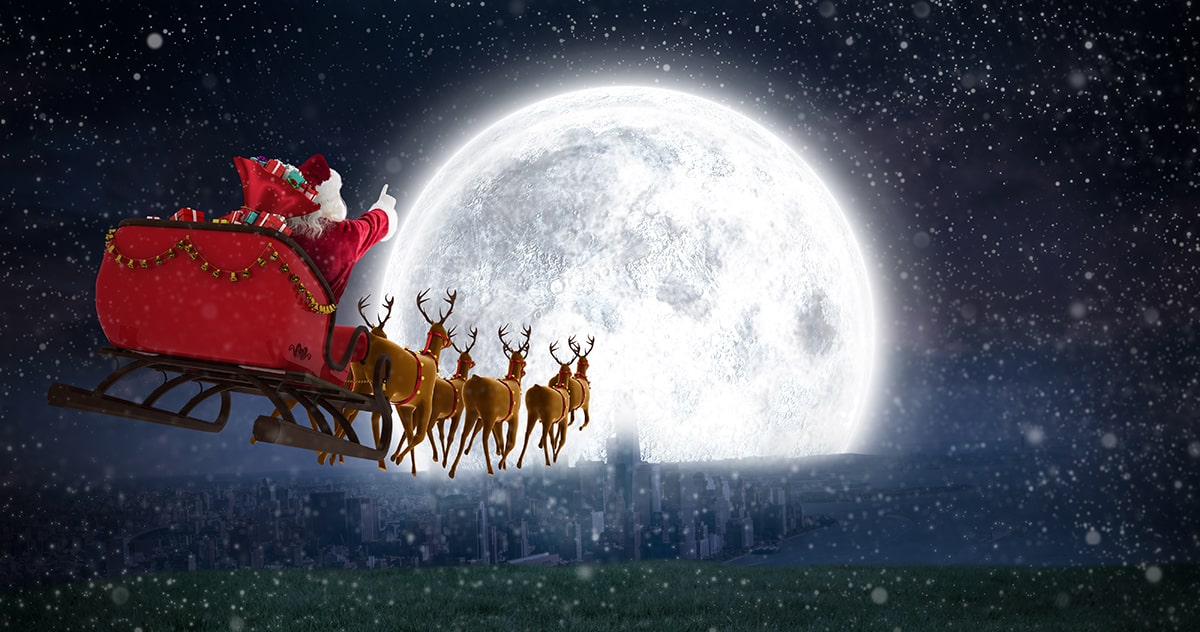Santa Claus, the beloved figure who delivers presents to children around the world every Christmas Eve, is a character ingrained in our holiday traditions. But do you know the intriguing facts that lie beneath the iconic red suit and snowy white beard?
In this article, we will uncover the lesser-known aspects of Santa Claus’s history, origins, and evolution. You can also read more facts about Christmas here.
Fact: He’s based on a real person

Santa Claus isn’t merely a figment of imagination; his roots can be traced back to a real individual. Saint Nicholas, a monk who lived around 280 A.D. in what is now Turkey, laid the foundation for the legendary figure. Saint Nicholas was renowned for his acts of charity, especially for helping the poor and sick. One heartwarming story tells of him providing a dowry for three destitute sisters, saving them from being sold by their father. Over time, he became known as a protector of children and sailors, and during the Renaissance, he stood as one of Europe’s most beloved saints.
Santa’s Home: Where does Santa Claus live?
Traditionally, it is said that Santa Claus’s abode consists of a dwelling and a workshop where he, often with the assistance of elves or other magical beings, crafts the gifts he delivers to well-behaved children on Christmas. Some tales and myths even depict a village surrounding his home and workshop, inhabited by his helpers.
In the North American tradition, specifically in the United States and Canada, Santa is believed to reside at the North Pole. Canada Post assigns this location to the postal code H0H 0H0, humorously referencing Santa’s famous “ho ho ho” saying, although postal codes starting with H are typically reserved for Montréal in Québec. On December 23, 2008, Canada’s Minister of Citizenship, Immigration, and Multiculturalism, Jason Kenney, formally granted Santa Claus Canadian citizenship. In an official statement, Kenney conveyed the government’s well wishes to Santa for his Christmas Eve duties and assured him of his automatic right to re-enter Canada after completing his worldwide journey.
In Alaska, there is a city called North Pole where the “Santa Claus House,” a popular tourist attraction, is located. The United States Postal Service uses the city’s ZIP code 99705 as the designated postal code for Santa Claus. Additionally, a Wendy’s restaurant in North Pole, Alaska, claims to have a “sleigh fly-through” feature.
Each Nordic country asserts that Santa’s residence is within their borders. Norway claims he resides in Drøbak, while in Denmark, he is said to live near Uummannaq in Greenland. This place is also home to the largest mailbox in the world, which receives approximately 50,000 letters each year from children in Denmark. In Sweden, the town of Mora has a theme park named Tomteland, and the national postal terminal in Tomteboda, Stockholm, receives children’s letters for Santa. In Finland, Korvatunturi has long been recognized as Santa’s home, with two theme parks, Santa Claus Village and Santa Park, situated near Rovaniemi. In Belarus, there is a home for Ded Moroz in Belovezhskaya Pushcha National Park.
In France, it is believed that Santa resides at 1 Chemin des Nuages, Pôle Nord (1 Alley of Clouds, North Pole). The French national postal service has provided a service since 1962 that enables children to send letters to Père Noël. Leading up to Christmas, any physical letter addressed to Santa Claus in the country is sent to a specific location where responses to the children’s letters are written and sent back to them.
| Country | Place they believe Santa Claus lives |
| United States, Canada & United Kingdom | North Pole |
| France | North Pole |
| Denmark | Uummannaq, Greenland |
| Norway | Drøbak |
| Sweden | Tomteland, Mora |
| Finland | Santa Claus Village and Santa Park in Korvatunturi |
| Belarus | Belovezhskaya Pushcha National Park (Ded Moroz) |
Furthermore according to the Dutch, Santa Claus comes with gifts on a boat from Spain!
His name came from the Netherlands
The name “Santa Claus” may sound purely English, but its origins are Dutch. The Dutch settlers who migrated to the New World colonies carried with them the legend of “Sinterklaas,” the Dutch term for Saint Nicholas. By the late 1700s, the story of the generous Sinterklaas began to influence American pop culture. It was during this time that Dutch families would gather to commemorate the saint’s death, and over the years, “Sinterklaas” gradually transformed into “Santa Claus.”
Christmas wasn’t always about Santa bringing gifts

The modern image of Christmas as a joyous holiday centered around gift-giving and Santa Claus wasn’t always the norm. In early America, Christmas was far from the festive celebration we now cherish. New Englanders, in particular, shunned the holiday, which was often celebrated outdoors with excessive alcohol consumption. It wasn’t until the early 19th century that a series of poems and stories helped redefine Christmas. These tales focused on the themes of family, togetherness, and the transformation of St. Nick into a generous gift-giver.
Fact: He didn’t always have a round belly
Before Santa became the jolly, rotund man we know today, he had a rather different appearance. In 1809, author Washington Irving played a crucial role in shaping Santa’s image through his book “Knickerbocker’s History of New York.” In this novel, Saint Nicholas was portrayed as a slim figure who smoked a pipe, flew over rooftops in a wagon, and delivered presents to well-behaved children while dispensing switches to those on the naughty list. Santa’s appearance has indeed evolved significantly over the years.
He’s only worn red since he started shilling for Coca-Cola
Santa’s fashion sense has seen various hues throughout history. His attire has ranged from green, brown, blue, and tan. However, it wasn’t until 1931 that Santa became predominantly associated with a red-and-white suit. This transformation can be credited to the Coca-Cola company, which used Santa in its early 1930s advertising campaigns. The company, renowned for its red branding, dressed Santa in these distinct colors, solidifying the image we recognize today. Santa’s red attire continues to play a central role in Coca-Cola’s holiday advertising campaigns.
Santa Claus was once a bachelor
For much of Santa’s existence in popular culture, he was depicted as a cheerful but unmarried man who tirelessly delivered presents to children worldwide. However, in 1849, the notion of Santa having a spouse first emerged in James Rees’ “A Christmas Legend.” It wasn’t until 1851 that Santa’s wife was officially named “Mrs. Claus” by a student writer for the Yale Literary Review. Today, Mrs. Claus is a beloved character in her own right, often portrayed as being responsible for ensuring that Christmas runs smoothly.


